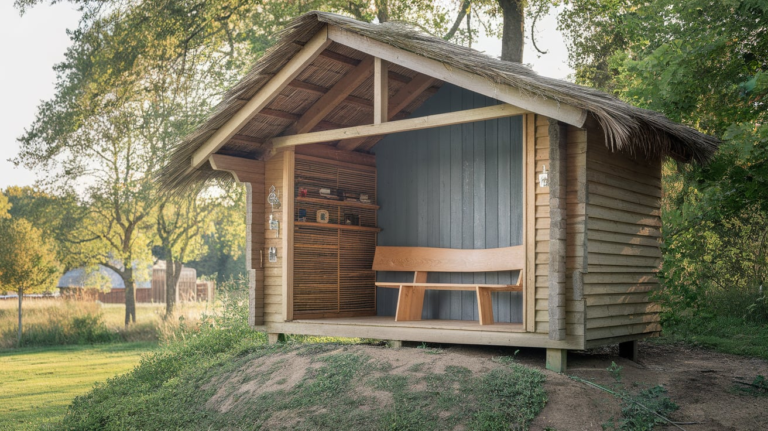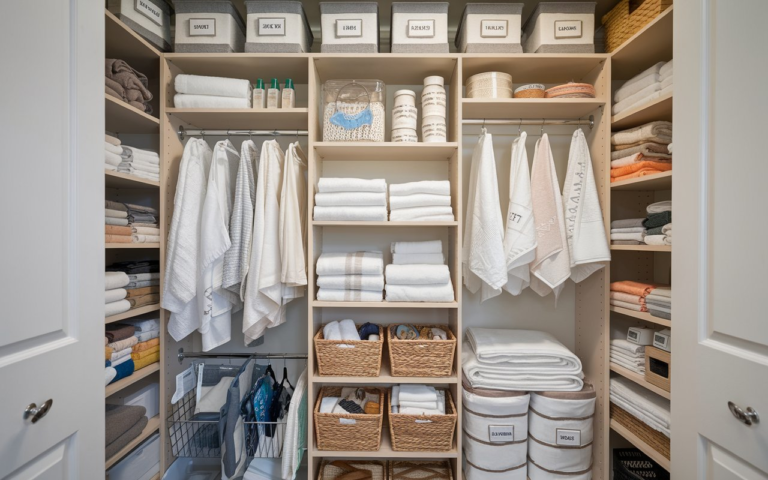25 Home Office Organization Ideas to Boost Productivity and Style
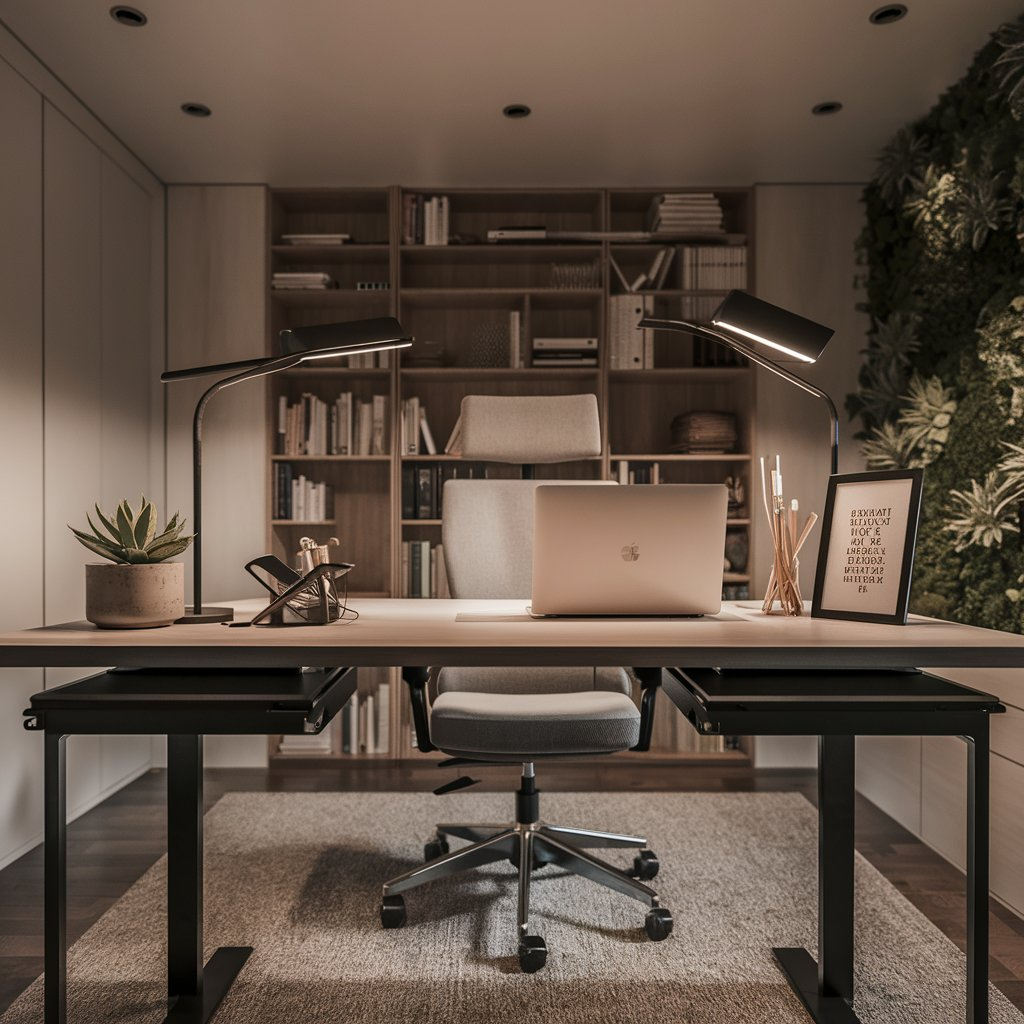
Setting up a home office can feel like preparing your personal command center. Whether you’re working from home full-time or just tackling the occasional project, the space you create plays a huge role in your productivity.
A disorganized home office can lead to distractions, frustration, and even stress. But fear not! Organizing your home office doesn’t have to be a daunting task.
In fact, with the right planning and tools, you can transform your workspace into a productive haven that inspires creativity and focus.
1. Declutter Your Desk

Let’s face it—your desk is where most of the action happens. But if you’re constantly wading through piles of papers, coffee mugs, and stray pens, productivity will take a hit.
Start by decluttering your desk. Take everything off and only put back what you truly need. This helps you focus on the task at hand without distractions. A clear desk is a clean slate for creativity and focus.
2. Use Cable Management Solutions

If you’re anything like me, your desk is a tangle of cables for your laptop, phone, printer, and more. Cable management is a game-changer in organizing your space.
Consider using cable clips, sleeves, or even a cable box to keep those tangled messes out of sight. Not only does this tidy up your desk, but it also prevents accidental unplugging when you’re in the zone.
3. Invest in a Filing System
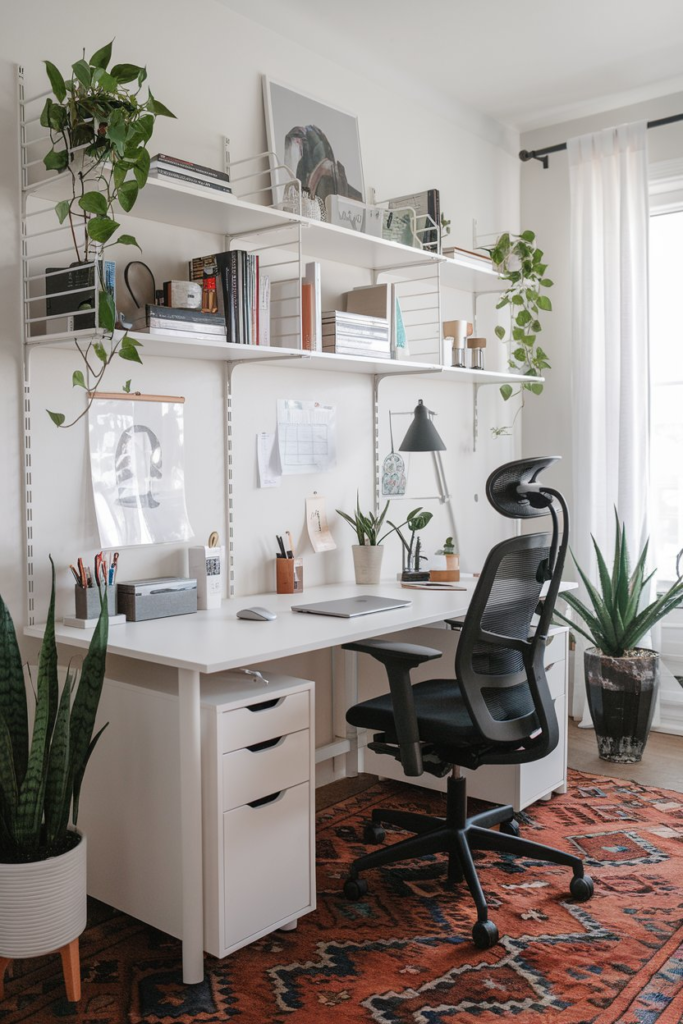
Paperwork can quickly pile up and overwhelm even the most organized people. Invest in a filing system to keep essential documents in order.
You can go the traditional route with filing cabinets or opt for a more modern approach with file organizers and accordion folders. The key is having a system that works for you—whether it’s by project, date, or category.
4. Wall-Mounted Storage
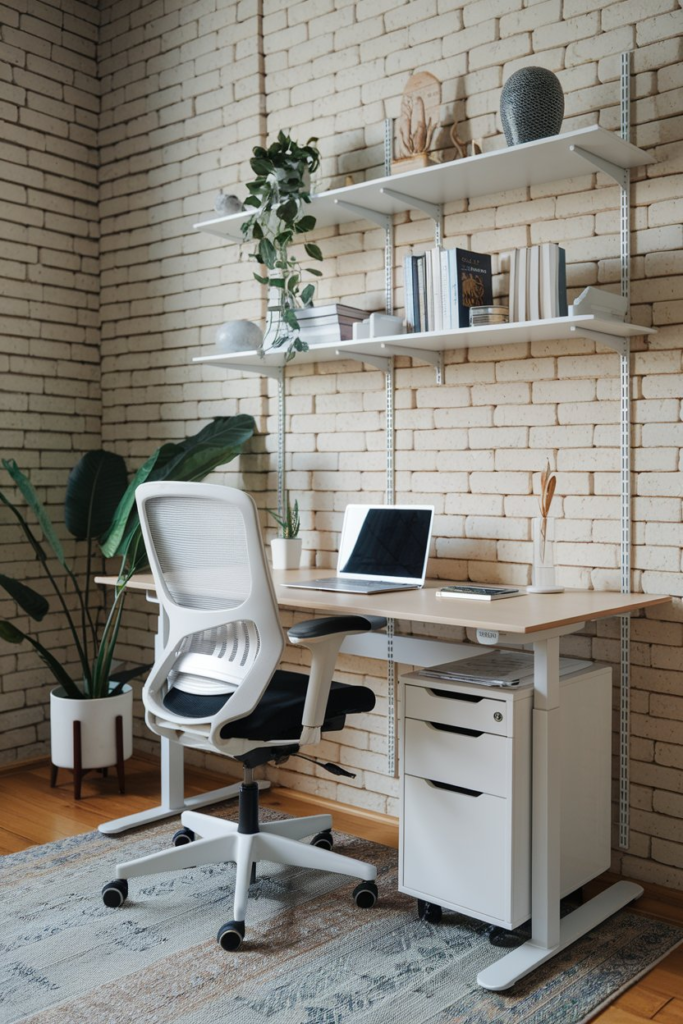
When floor space is limited, wall-mounted storage is a lifesaver. Install shelves or floating cabinets to store books, supplies, or decorative items.
This keeps your desk area open while maximizing vertical space. Plus, it adds a touch of personality to your office with framed pictures, plants, or favorite books.
5. Create a Paperless System

One way to avoid the dreaded paperwork pileup is to go paperless. Use digital tools like Google Drive or Evernote to store important documents, notes, and files.
Scanning important physical documents and storing them digitally reduces clutter and ensures you can access your files anytime, anywhere.
6. Invest in a Comfortable Chair
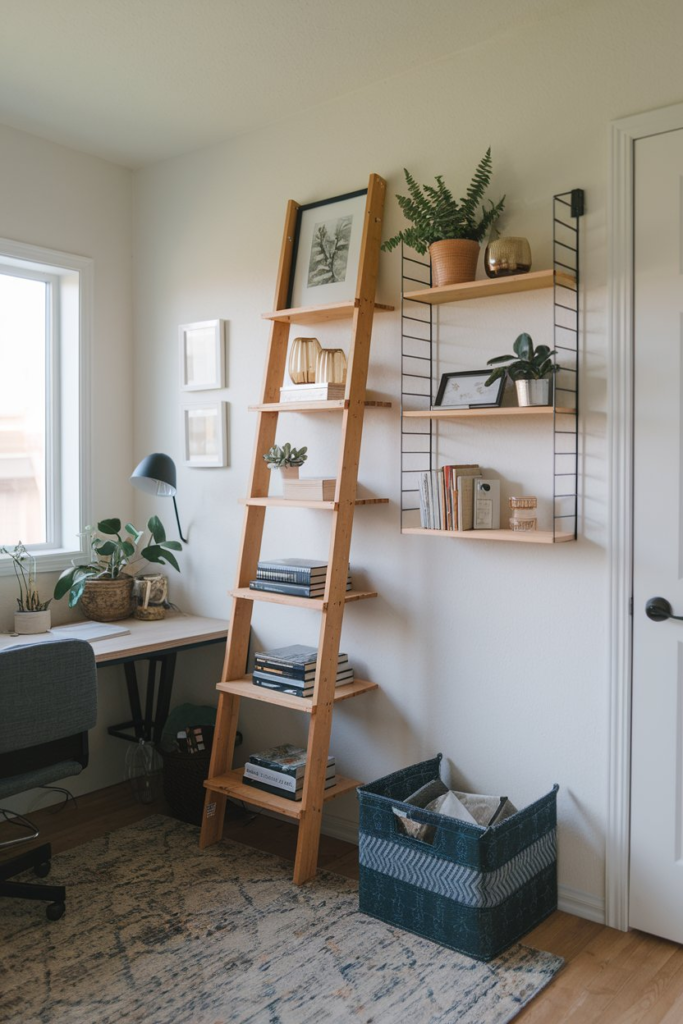
A comfortable chair isn’t just about aesthetics; it’s about your well-being. An ergonomic chair promotes good posture, reduces back pain, and allows you to work longer without discomfort.
Don’t skimp on this crucial element of your office setup. After all, you’ll be spending hours sitting in it—make sure it’s worth it.
7. Use Drawer Organizers
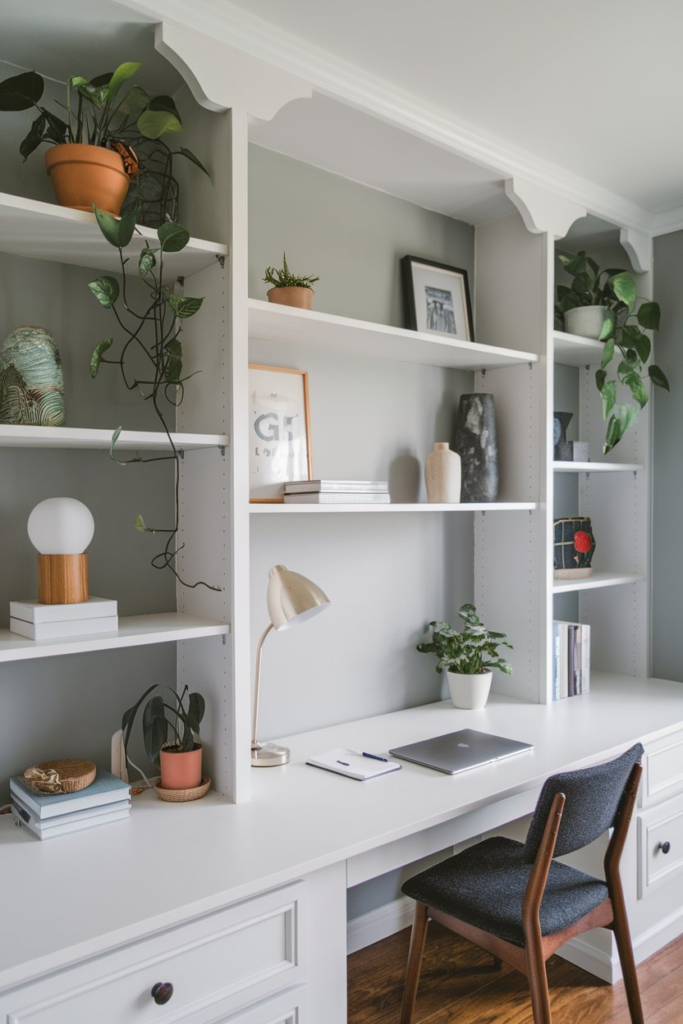
Drawers are often the catch-all for loose items that don’t have a designated home. But using simple drawer organizers can help keep everything in its place.
Whether it’s pens, paperclips, or sticky notes, these organizers prevent drawer chaos and make it easy to find what you need without digging around.
8. Create a Daily Cleaning Routine
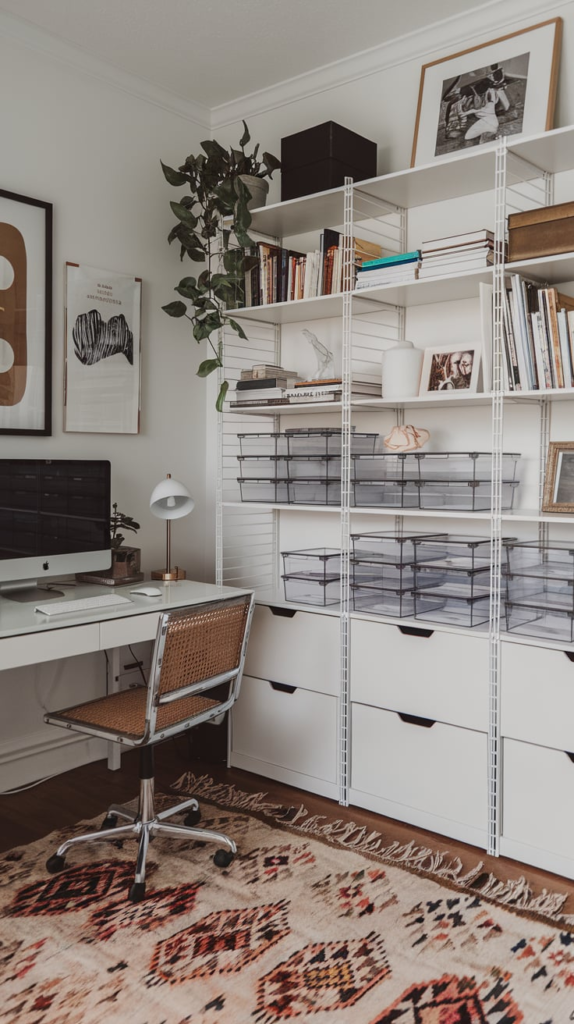
A tidy office isn’t just about once-a-week cleaning sessions. Create a daily cleaning routine to stay on top of any clutter that accumulates. Spend 10-15 minutes at the end of each day tidying up your desk, sorting papers, and putting things away. This small habit will keep your office organized and ready for the next day’s work.
9. Use a Whiteboard or Corkboard

Sometimes, a digital to-do list just doesn’t cut it. A whiteboard or corkboard can serve as a visual reminder for your tasks, deadlines, and goals.
Hang it near your desk and use it to keep track of important notes or ideas. It’s a great way to stay focused and keep your priorities front and center.
10. Declutter Your Digital Space

Just like physical clutter, digital clutter can weigh you down. Clean up your desktop, organize files into folders, and unsubscribe from unnecessary email lists.
A decluttered digital space will help you focus on what’s important rather than sifting through a sea of irrelevant files.
11. Incorporate Natural Light
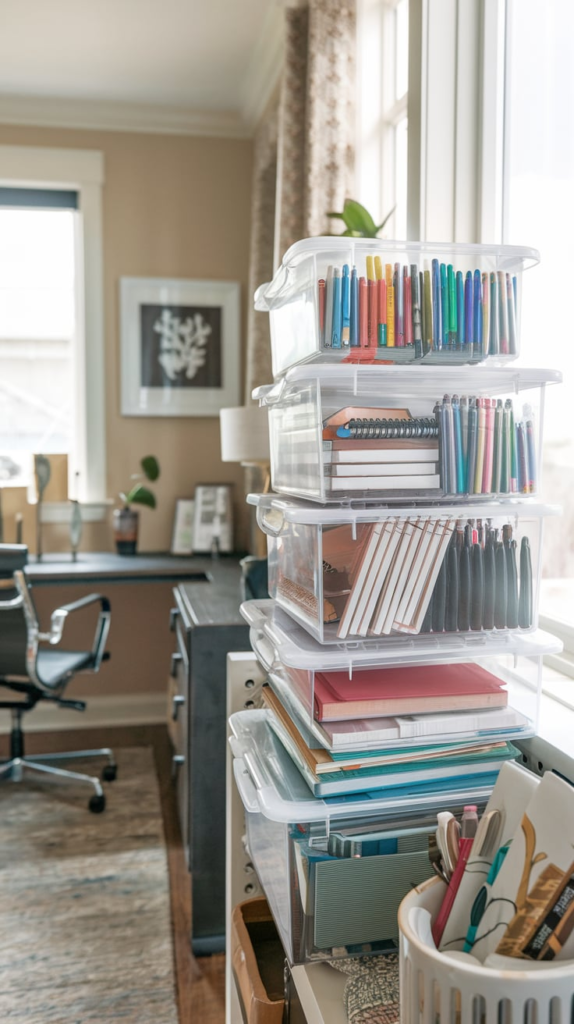
Natural light has been shown to improve mood and increase productivity. If possible, position your desk near a window to take advantage of natural sunlight. If that’s not an option, consider adding bright light bulbs or task lighting to create a well-lit, welcoming environment.
12. Add Personal Touches

While it’s important to maintain a professional atmosphere, don’t forget to add some personal touches to your office. Whether it’s a favorite plant, artwork, or family photo, personalizing your space can make it feel more comfortable and inspiring. A space that feels like your own will help you feel more motivated and focused.
13. Keep Your Desk Minimalist
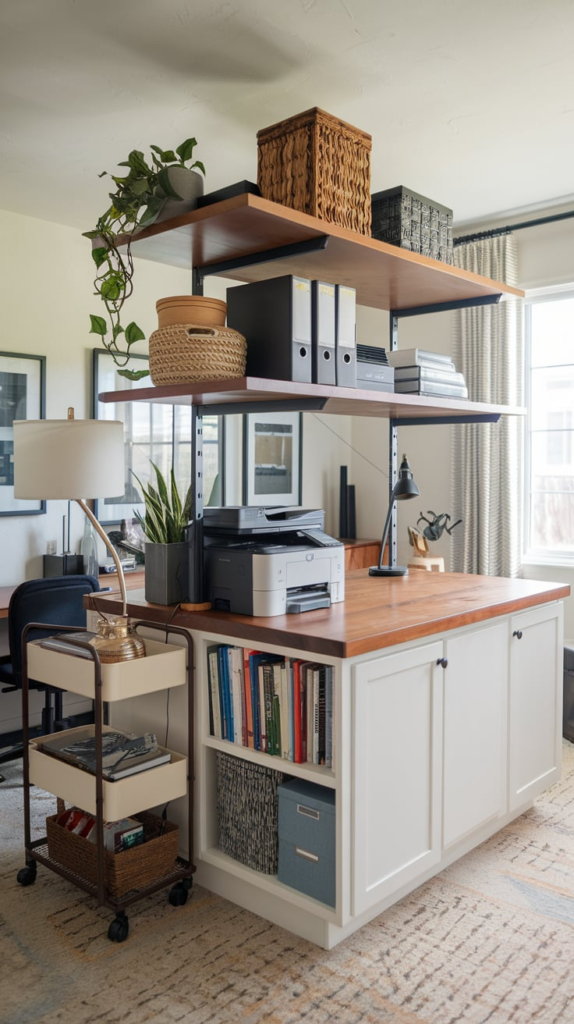
A minimalist desk setup can work wonders for your productivity. Keep only the essentials—laptop, notepads, and a few pens—on your desk.
Sticking to a minimalist aesthetic prevents distractions and helps you focus on the task at hand. If you need more storage, consider hidden compartments or sleek organizers that don’t take up too much space.
14. Label Everything
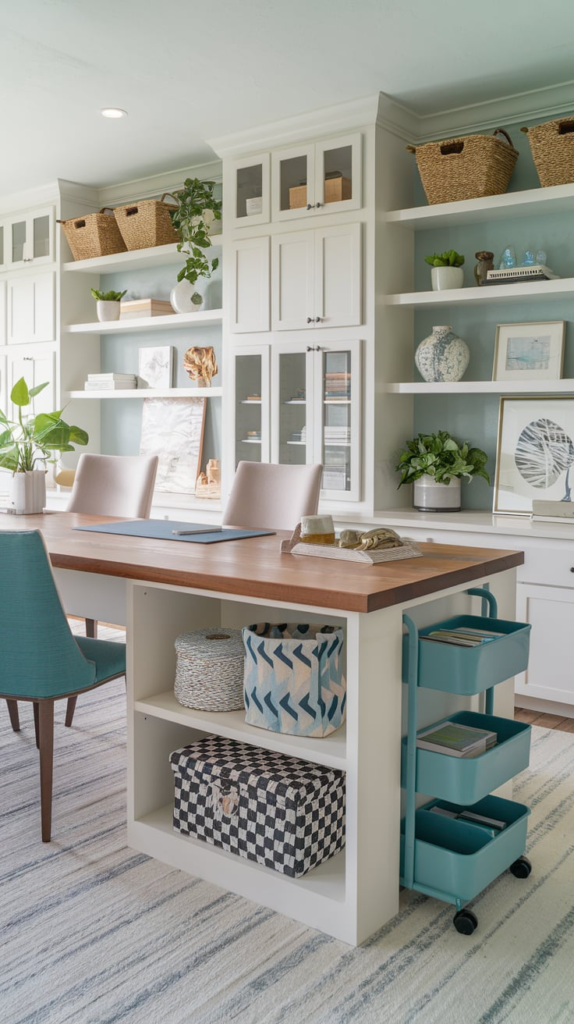
A simple yet effective way to stay organized is by labeling everything. Whether it’s folders, drawers, or bins, clear labels make it easy to find what you need without guessing. This saves you time and ensures that everything has a designated home.
15. Create Zones in Your Office
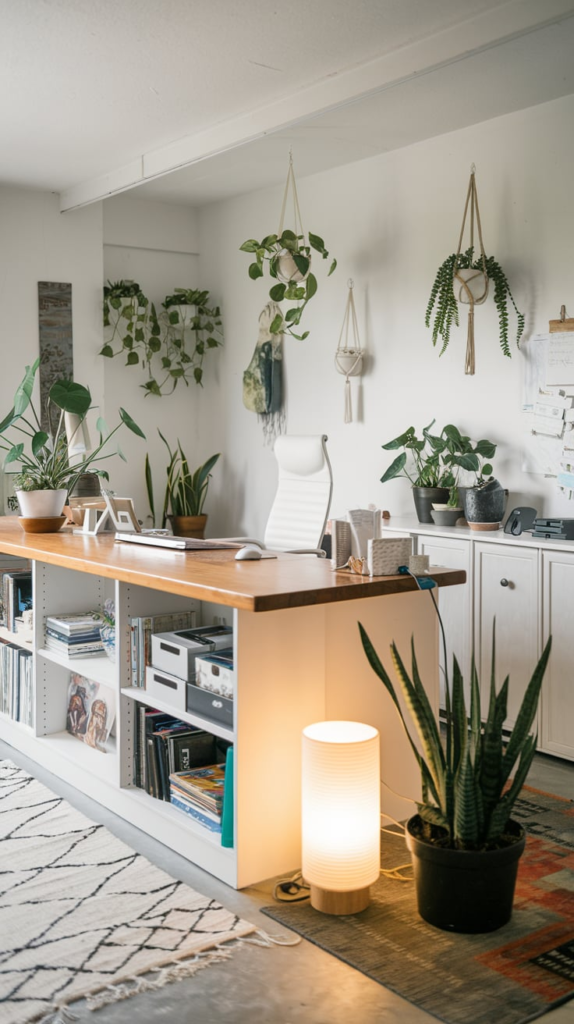
If your office is on the smaller side, consider creating distinct work zones for different tasks. For example, designate one corner for writing and brainstorming, while another area can be reserved for meetings or phone calls. This separation can help you stay organized and mentally prepared for different tasks.
16. Use a Rolling Cart
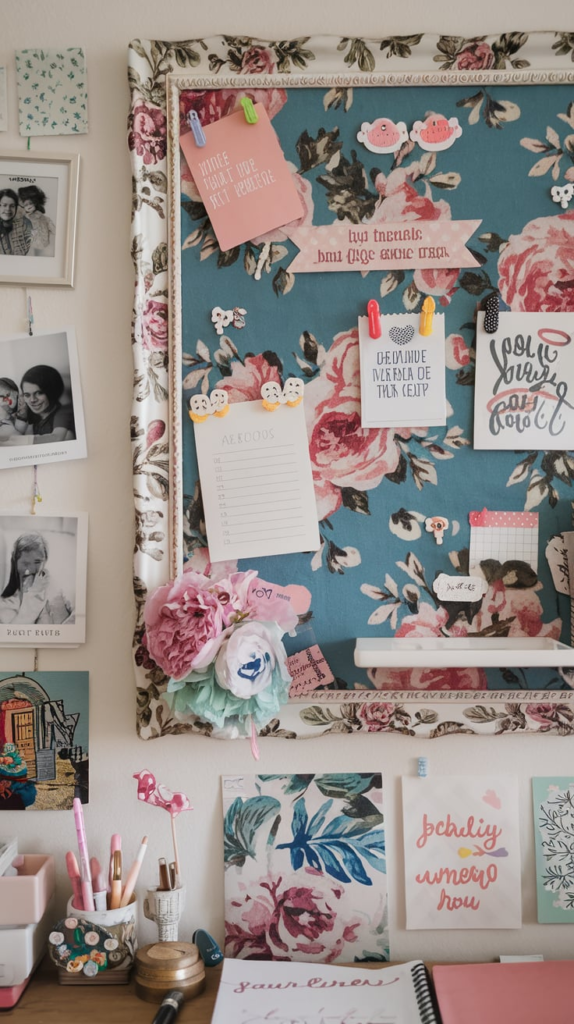
A rolling cart can serve as a mobile storage unit that helps you keep your office supplies organized and within easy reach. It’s especially useful for storing items that you need but don’t want cluttering up your desk. Plus, you can easily move it to different spots around the room depending on your needs.
17. Have a Filing System for Digital Files
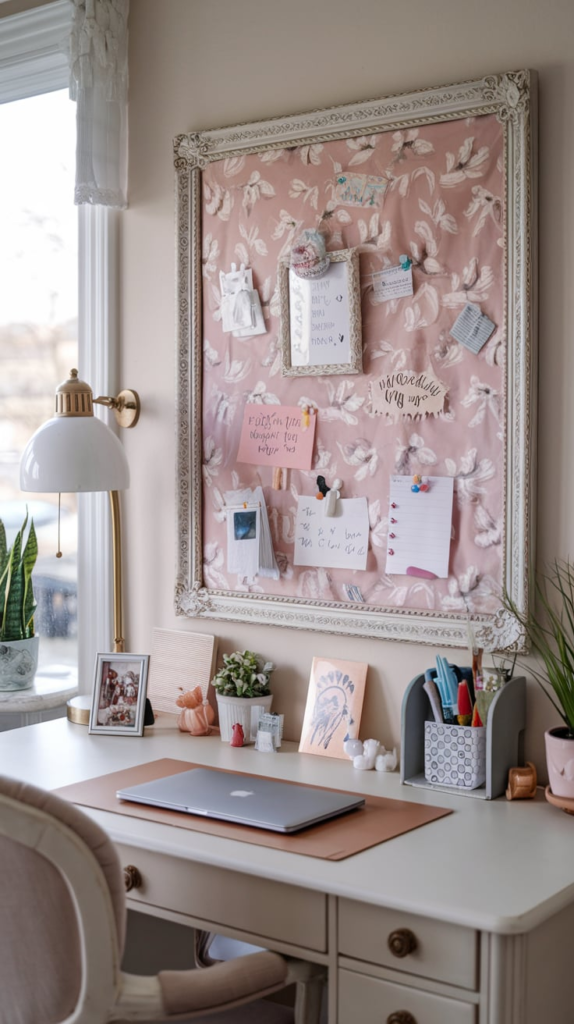
Just as you need a physical filing system, your digital files also need organization. Create a logical folder structure on your computer or cloud storage so you can easily find the documents you need.
Set aside time each week or month to organize new files, ensuring that your digital workspace stays as tidy as your physical one.
18. Install a Pegboard
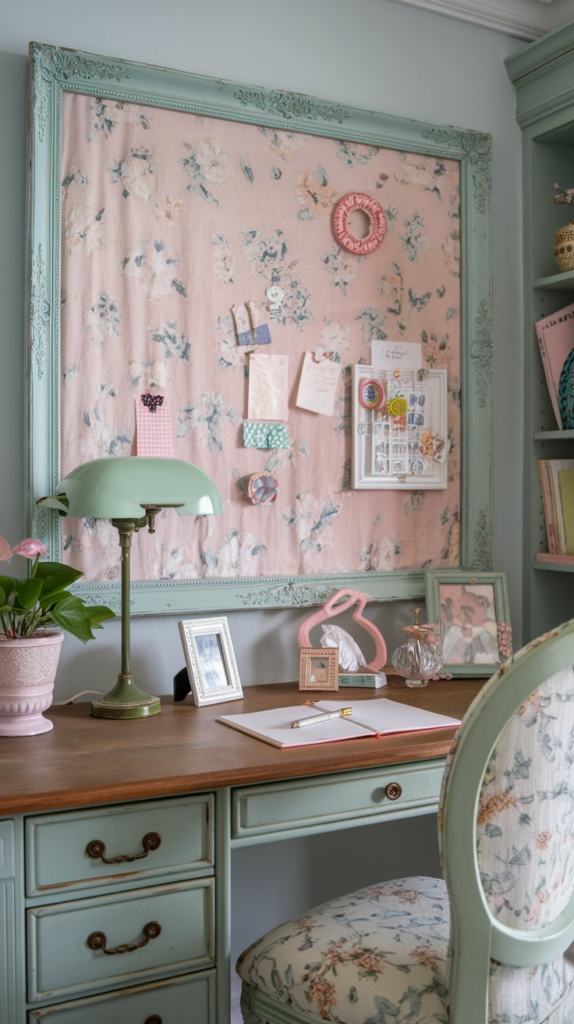
A pegboard is an excellent way to hang and organize tools, supplies, and accessories. It can hold everything from pens to scissors to headphones, allowing you to free up valuable desk space. Plus, it’s customizable—you can rearrange the pegs as your needs change.
19. Keep a Clean Trash Bin Nearby

A trash bin is essential for keeping your office tidy. Make sure it’s easily accessible so that you can toss unwanted papers, wrappers, and other waste without leaving your desk. Regularly empty your trash bin to prevent clutter from piling up.
20. Organize Your Bookshelf
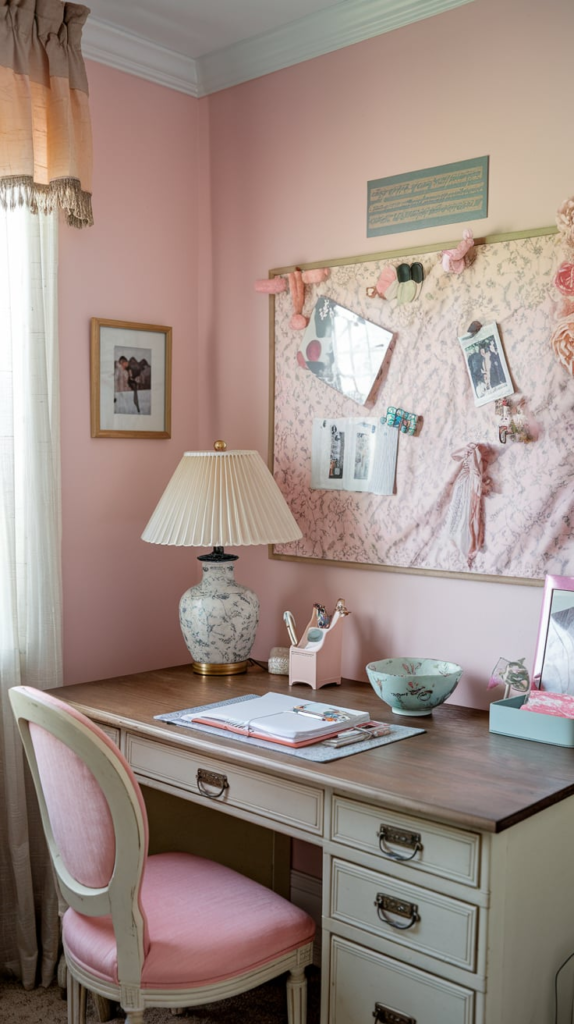
If you have a bookshelf in your office, make it work for you. Organize books by category, color, or size—whatever makes the most sense for your workflow.
Use decorative boxes or baskets on the lower shelves to store office supplies or personal items, keeping them out of sight yet easily accessible.
21. Designate a Spot for Everything
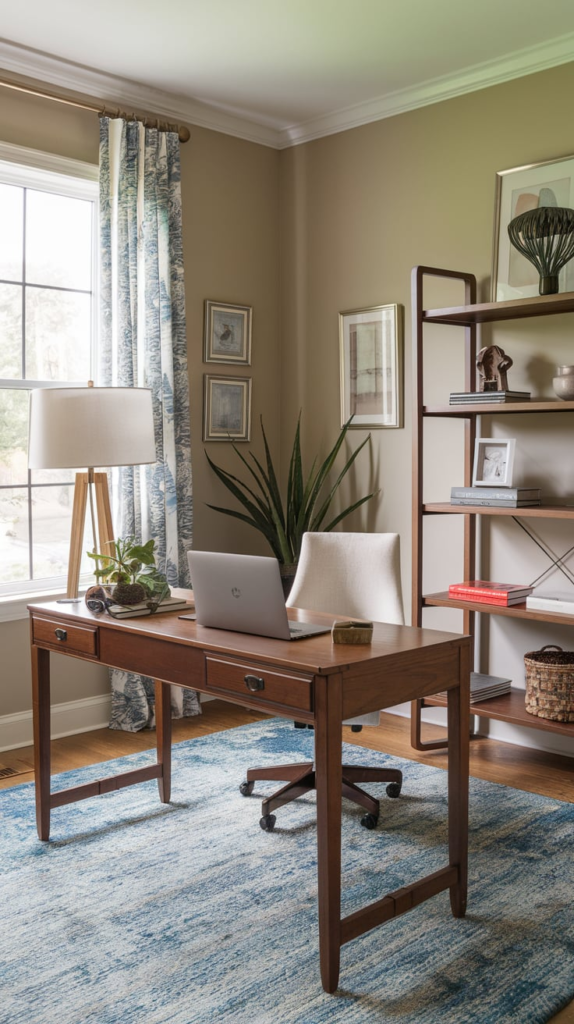
One of the simplest ways to stay organized is by designating a spot for everything. Whether it’s your pens, notebooks, or even your coffee mug, having a specific place for each item reduces the likelihood of clutter. It’s easier to put things away when you know exactly where they belong.
22. Opt for Multi-functional Furniture

If you’re tight on space, multi-functional furniture can work wonders. Consider a desk with built-in storage, or a chair that doubles as a filing cabinet.
Furniture that serves multiple purposes helps maximize your space and keeps everything within reach without sacrificing style.
23. Regularly Review Your Office Setup
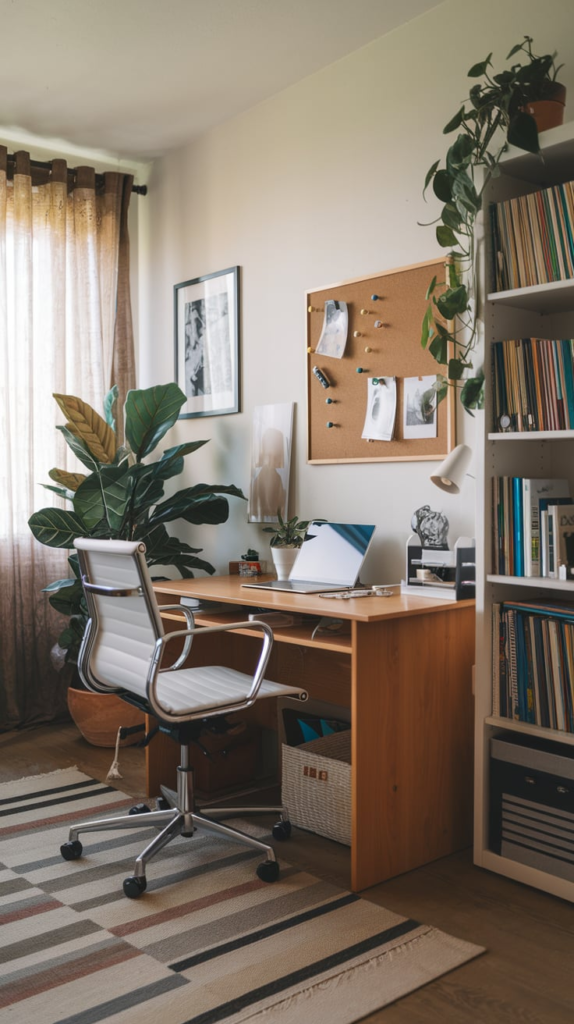
An organized home office is not a “set it and forget it” situation. Regularly review and refresh your office setup to ensure it’s still working for you.
As your work habits change, so should your office. Periodically reassess your storage, layout, and organization to keep things running smoothly.
24. Keep Your Office Quiet and Clutter-Free
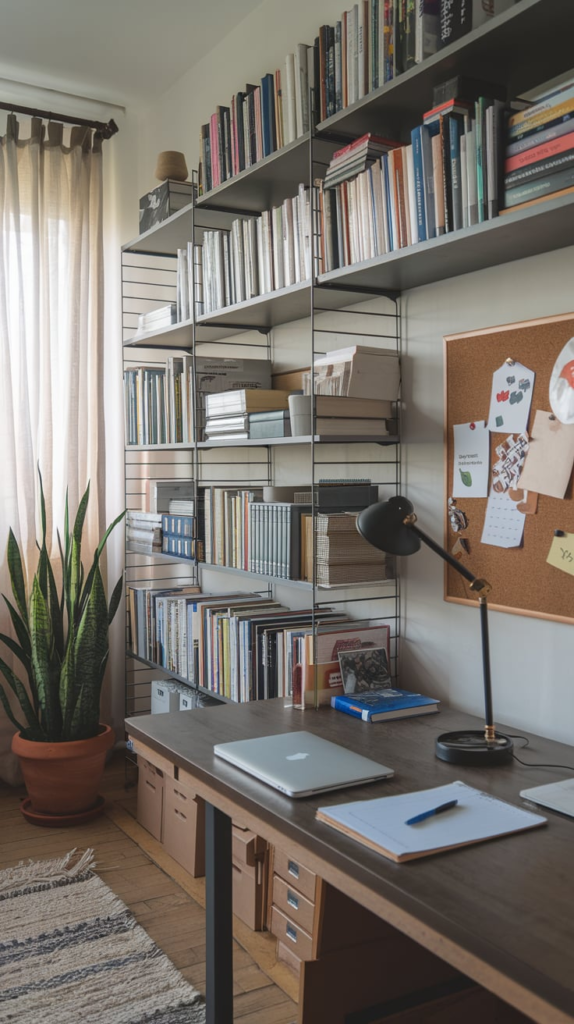
Sometimes, distractions come in the form of noise or visual clutter. If you work best in a quiet environment, consider soundproofing your office or using noise-canceling headphones to block out distractions. If visual clutter is your main issue, use blinds or curtains to control the amount of light and keep your workspace calm.
25. Stay Consistent with Organization

Once you’ve organized your home office, the key is to stay consistent. Develop habits that help you maintain order, such as putting things away at the end of each day, filing documents immediately, and tidying up before you start a new project. Consistency is the secret to long-term organization.
Conclusion
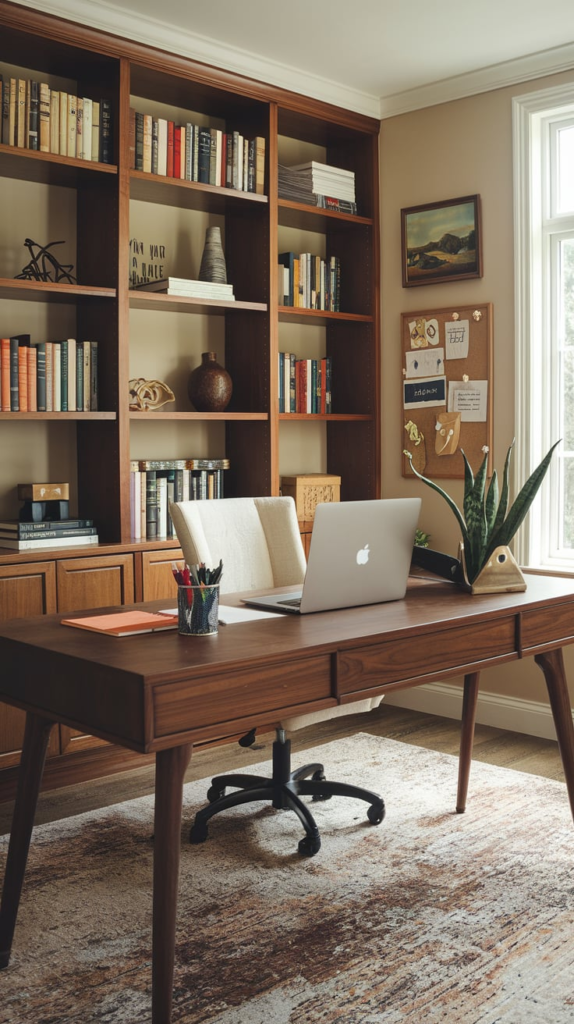
Organizing your home office might feel like a daunting task at first, but once you begin to implement these ideas, you’ll start to see the positive effects on your productivity and mental clarity.
Remember, an organized workspace isn’t just about neatness—it’s about creating an environment that supports your work habits and lifestyle.


